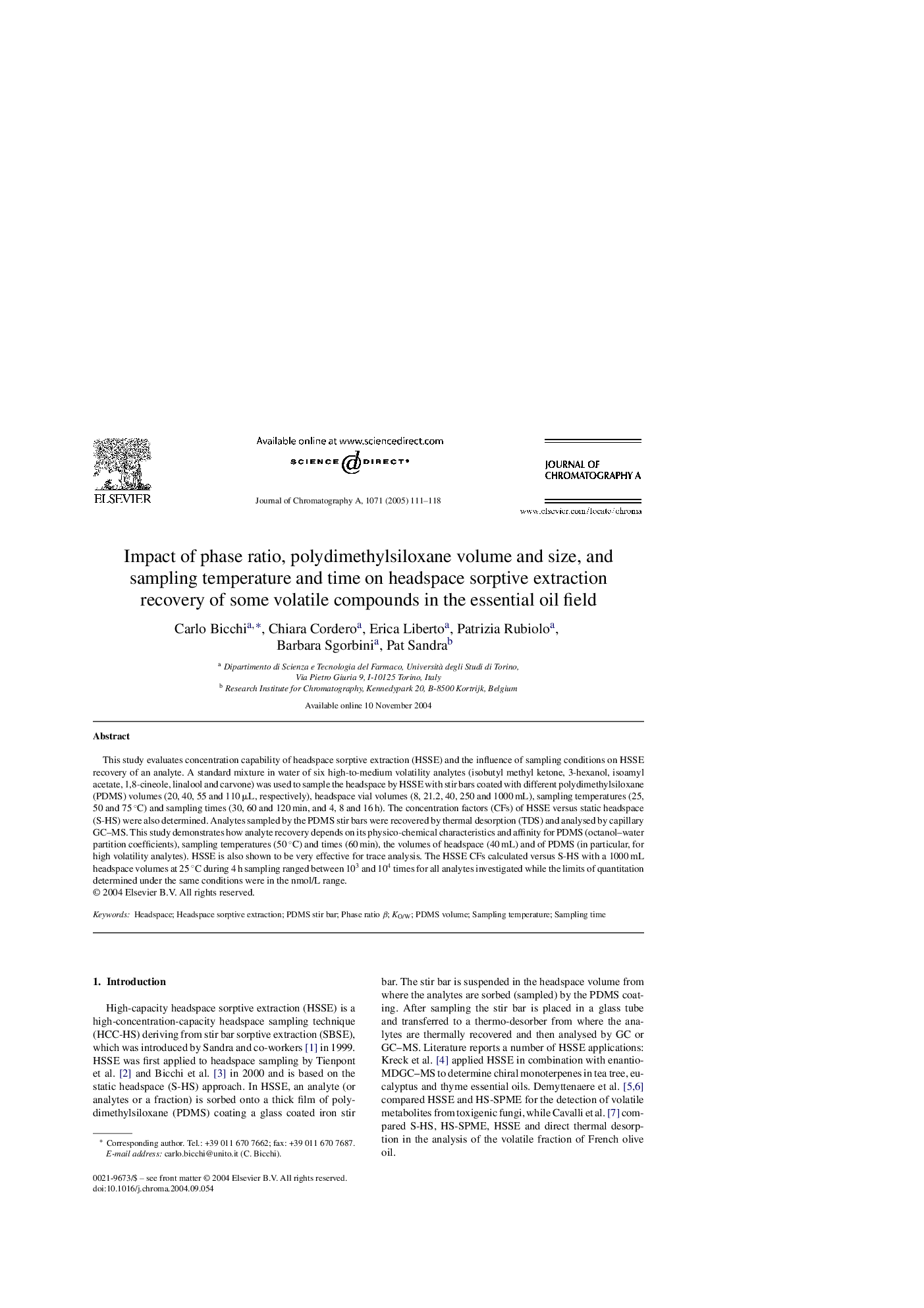| Article ID | Journal | Published Year | Pages | File Type |
|---|---|---|---|---|
| 9749185 | Journal of Chromatography A | 2005 | 8 Pages |
Abstract
This study evaluates concentration capability of headspace sorptive extraction (HSSE) and the influence of sampling conditions on HSSE recovery of an analyte. A standard mixture in water of six high-to-medium volatility analytes (isobutyl methyl ketone, 3-hexanol, isoamyl acetate, 1,8-cineole, linalool and carvone) was used to sample the headspace by HSSE with stir bars coated with different polydimethylsiloxane (PDMS) volumes (20, 40, 55 and 110 μL, respectively), headspace vial volumes (8, 21.2, 40, 250 and 1000 mL), sampling temperatures (25, 50 and 75 °C) and sampling times (30, 60 and 120 min, and 4, 8 and 16 h). The concentration factors (CFs) of HSSE versus static headspace (S-HS) were also determined. Analytes sampled by the PDMS stir bars were recovered by thermal desorption (TDS) and analysed by capillary GC-MS. This study demonstrates how analyte recovery depends on its physico-chemical characteristics and affinity for PDMS (octanol-water partition coefficients), sampling temperatures (50 °C) and times (60 min), the volumes of headspace (40 mL) and of PDMS (in particular, for high volatility analytes). HSSE is also shown to be very effective for trace analysis. The HSSE CFs calculated versus S-HS with a 1000 mL headspace volumes at 25 °C during 4 h sampling ranged between 103 and 104 times for all analytes investigated while the limits of quantitation determined under the same conditions were in the nmol/L range.
Related Topics
Physical Sciences and Engineering
Chemistry
Analytical Chemistry
Authors
Carlo Bicchi, Chiara Cordero, Erica Liberto, Patrizia Rubiolo, Barbara Sgorbini, Pat Sandra,
